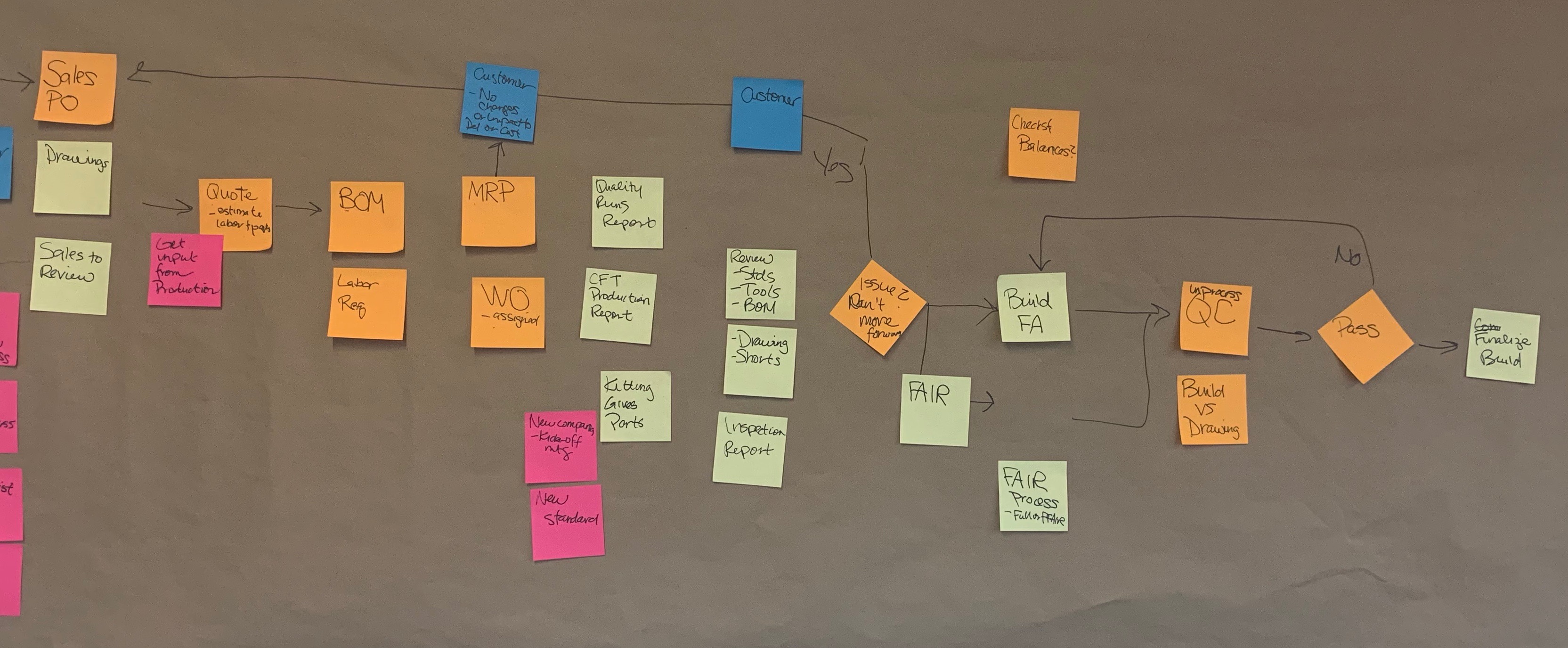
by Julie | May 21, 2020 | Efficiency, Process Improvement
On Mother’s Day eve, I became a chicken mama. Our friends brought over two hens and three chicks and put them in my chicken coop.
On Mother’s Day morning, we opened up the chicken coop door and out came five very scared chickens.
By that evening, however, we had less than five chickens.
Here is the daily morning count of our chickens: 5, 4, 3, 4, 0, 5, 0, 0, 5, 0, 5, 5, 0, 5.
Here is what we learned:
- Chickens can fly better than we thought
- Chickens can and will roost in a tree
- One of our hens has figured out where to lay her eggs in the coop, but I do believe we will need an egg hunt to locate the other hen’s eggs
- I need to redesign my whole plan for having free-range chickens.
So how does this relate to our current life? Our economy is slowly starting to move toward the next phase of the pandemic – learning how to re-open businesses while keeping people safe. This process will change the way we do business, both as we interact with our customers and how we do our work internally.
If you looked carefully at your current processes, you would probably agree that there are some inefficiencies that, if addressed, could lead to increases in productivity. In our pre-COVID-19 life, this may not have been a top priority, but now we are forced to make changes in order to protect the health and safety of our employees, customers and stakeholders. I believe we can leverage this as an opportunity for growth.
Consider a few of these ideas:
- Employ a Kanban scheduling system to reduce interactions between departments and employees.
- Use process mapping to highlight non-value-added steps in your process. Then redesign your new layout or flow to eliminate or streamline those steps.
- Implement a visual workplace that outlines product flow, departmental goals, and performance metrics.
If you are feeling overwhelmed by the changes you need to implement in your business, let’s connect. I have spent my entire career streamlining processes of all kinds, from tortilla chip manufacturing to metal casting to sales. My brain is hardwired to find the inherent opportunities in a process and leverage them to maximize productivity, reduce waste, and increase profitability. My clients have seen an average a five times ROI on the work we have done together.
I welcome the opportunity assist you in maximizing the output of your business. And if you have some tips on how to be a better chicken mama, I’d welcome your input.

by Julie | Mar 5, 2020 | Innovation, Process Improvement
I was never a big fan of process flow maps. It seemed like such a tedious activity, which in my opinion didn’t do much but capture an already obvious process. But that all changed a few years ago. I was working with some Six Sigma Black Belts to develop a hands-on course on how to apply process control tools to the investment casting industry. We knew what we wanted to teach, we knew how we wanted to teach it, but we kept struggling with how to get where we wanted to go. After a few months of minimal progress, I mapped out the steps of the process we wanted the students to follow, identifying decisions that needed to be made and delays that could impact the flow.
What a game changer! This flow chart has become invaluable to students and to the instructors when we teach the class. Our instructors agree that mapping out the process was a turning point, and we often ask ourselves what took us so long to start using this tool, especially since it was a tool we were trying to teach the students to use.
A few weeks ago, I was mapping out a process for a client and we identified some delays that could be avoided if we added some steps earlier in the process. We also identified ways to increase customer satisfaction by adding a few minor steps at strategic points in the process.
Are you looking for ways to increase throughput without adding resources? Try process flow mapping. This can highlight gaps, opportunities for improvement and non-value-added steps. By addressing those, you can reduce delays, improve consistency and increase capacity. If you want help getting started, send me an email! I’d love to help you!

by Julie | Oct 13, 2016 | Management, Process Improvement
GIVING YOUR EMPLOYEES THE TOOLS THEY NEED TO DRIVE IMPROVEMENT
After writing my article titled, “Don’t Rely on Super Heroes to Achieve Your Business Objectives”, I received numerous comments about not wanting to have too strict of a process that it stifles operator input. I completely agree as we need employees who are engaged in their work to drive improvements. And in order to do that, they need to have the freedom to come up with new, innovative ways to improve the processes they work in every day.
As a manager, I would tell my employees, if you make a wrong decision but your thought process is right, then we will do some coaching about how you arrived at your decision. But, if you make a wrong decision and your thought process is wrong, we will have a completely different discussion.
My team knew my priorities were: safety, quality and communication. So, as they made changes, they needed to think through how the changes would impact these priorities.
The area where they struggled the most was communication. Having honest, direct communication is difficult and in order to that well, employees need to see this demonstrated on a consistent basis and be given the necessary training on how to communicate effectively, especially in emotional situations.
As they made process improvements, we would talk through their decision making process and as necessary, make suggestions on how things could be improved upon in the future. Of course, there were times when decision making wasn’t done with safety, quality or communication in mind. During those difficult circumstances, I would discuss how the outcome could have been improved by keeping them in mind.
Over time, my team was better equipped to make improvements to the process while keeping the business priorities at the forefront of their minds. This provided an opportunity to make process improvements without relying on their favorite super hero.

by Julie | Sep 29, 2016 | Efficiency, Management, Process Improvement
Addressing the Gaps in Your Systems
Your plant has highly detailed procedures on how to do each job. The operators are trained not to deviate from the procedures. But, what happens when a conscientious operator notices as problem with a part. In order to properly process it, the operator must deviate from the procedure. Without a system which instructs the operator how to handle this situation, scrap parts may be made.
So, what does the operator do? Deviate from the procedure or blindly follow the process?
W. Edwards Deming, considered the patriarch of process control was quoted as saying, “A bad system will beat a good person every time.” John Hunter, author of Management Matters summed this is up best by saying, “relying on heroic measures is a bad way to manage.”
If you want your people to be successful, you need to put the systems in place in order to allow them to do that. If you find your employees are making a lot of mistakes, perhaps the training system needs to be augmented in order to prevent mistakes from happening. If you find your employees aren’t consistently performing at the level that is required, maybe it is time to review the processes they use on a daily basis and address those areas that are causing issues.
I love super heroes, but, I wouldn’t want to have to depend on them every day to make my business successful!

by Julie | Jul 14, 2016 | Efficiency, Employee Training, Management, Process Improvement
GETTING THE MOST OUT OF YOUR TECHNOLOGICAL IMPROVEMENTS
A member of my family recently purchased a new car with all the bells and whistles. This car came with a navigation system, internet access, adaptive cruise control and forward collision warning. Learning all the technology was overwhelming. But, what my family member forgot was that the primary purpose of the vehicle was to drive him from Point A to Point B. As you can imagine there were a few near misses as he learned how to handle all the technology right at his fingertips.
Learning new systems or technology can be challenging, especially if the person isn’t particularly tech savvy. As the individual focuses on learning the newly installed systems, he may lose focus on other important tasks such as safety or product quality. Understanding and planning for this loss of focus is important as new technology is introduced to your operators. This may require a reduction of throughput during the initial learning curve or possibly staffing additional operators so throughput and/or quality aren’t compromised.
As you develop your training plan, make sure to incorporate as many senses as possible including auditory, visual and kinesthetic. Everyone learns a little differently and incorporating different senses can increase the speed at which an operator learns the necessary information. Never don’t underestimate the importance of hands-on learning.
When you train your employees on the new systems, keep an eye out for the operators who appear to be struggling. If you are picking up on it, then their peers probably are as well and this can result in anxiety and a reduction of focus by the struggling employee(s). Consider some contingency plans for these employees where they can get additional training without being scrutinized by their peers.
Technology can be an asset to a manufacturing plant, but, make sure that you incorporate the necessary operator training systems so you can realize all the benefits without a negative impact to operator safety or product quality.
For more practical tips for manufacturing professionals to attract, train and retain your hourly workforce, go to www.keyprocessinnovations.com.

by Julie | Jul 6, 2016 | Efficiency, Employee Training, Management, Process Improvement
Understanding Your Operators Resistance to Change
How many times have you heard the phrase, “I’ve been doing this for over 20 years and this hasn’t been an issue before” Or “What makes you think we need to change this now?” I think those phrases are code words that could touch on some underlying issues including:
- Fear of change. This fear can be twofold: what I have been doing all these years has been wrong so now I have to change or what I thought was secure is now changing leading potentially to some period of uncertainty. Preparing employees for change can help them overcome this fear. I have conducted change management seminars to help management teams adjust to shifts in the workplace. But, I also know that change gets easier the more it is experienced. So, if you are sensing resistance from your team, you might want to make some small changes which can help your operators adapt to an ever-changing work place. Or, if a large change is planned, take the time to train your operators on why change is necessary along with suggestions on how to manage the stress of change.
- Mistrust. Most long-term employees have been doing the same thing for many years and now, you are asking them to change. Questions I have heard include: Why do you all of sudden think that I need to make a change?What is your motivation for making me change? Are you are trying to make yourself look good and me look bad? Operators, especially long timers, are observant. If they sense that management isn’t being honest with them, they will fight the changes that are being implemented. An attitude of open, honest and consistent communication will go a long way towards overcoming mistrust.
- Prejudice. After a certain amount of time, adults will develop an attitude towards an individual or group of individuals which will frame their thinking. These prejudices can impact an adult’s willingness to adopt new ideas. As a young engineer, I heard over and over again, typically in a sarcastic tone, “Oh, the engineer is here to tell us what we are doing wrong.” In order to overcome these prejudices, I spent time listening to the operators, asking for their input and implementing some of their ideas. Yes, it took time, but, eventually, I found these operators much more willing to work with me. However, these prejudices won’t go away overnight and require a willingness from all parties to work together and make sure each side is being heard and understood.
As you approach training of your workforce, it is important to keep these potential issues in mind. Put yourself in your employee’s place and think about the best approach to introducing new methods and concepts. The more time that is spent developing the training and addressing some of the underlying concerns, the greater the impact the training can have on your workforce.
For more practical tips for manufacturing professionals to attract, train and retain your hourly workforce, go to www.keyprocessinnovations.com.

by Julie | Jun 22, 2016 | Consulting, Employee Training, Interim Management, Management, Process Improvement
USING INTERNAL AUDITS TO OPTIMIZE YOUR PROCESS
I’ll be honest, I’d be embarrassed if you ever saw my work shop. I tend to be one of those people who works around my messes. I don’t normally detect how dirty my workspace is until my husband gently suggests that I might work a bit more efficiently if I cleaned up my work bench before starting on another project.
I believe we are all guilty of looking past what we see on a daily basis. That is why audits are so important. An outside set of eyes can see areas that we may overlook. Internal audits can be structured in a number of different ways but must include a system for follow-up. Over my time in manufacturing, I have seen audits implemented in a number of effective ways, including the following:
- Management Gemba Walk – This can be an effective tool to demonstrate to the workforce a sense of unity within the management team. In addition, when issues are identified, all the managers can collectively decide how to address the issue.
- Safety Audits – These are typically conducted by members of the EH&S committee and are focused on potential safety or environmental hazards. Getting employees involved in this committee can greatly enhance the effectiveness of these types of audits.
- Layered Process Audits – LPAs are conducted on specific processes by individuals who don’t work in the department being audited. This gives a set of eyes that may detect issues that department employees may overlook. In addition, it provides employees exposure to other departments within the plant.
- Quality Systems Audit – this audit can be used to make sure the quality system is being followed. These are typically conducted by personnel trained on the Quality Measurement System and are focused on ensuring conformance to company policies and regulatory requirements.
Regardless of the type of audits that are conducted in your plant, make sure there is a mechanism in place to ensure that identified issues are addressed. Without this, the audits may lose their intended purpose.
For more practical tips for manufacturing professionals to attract, train and retain your hourly workforce, go to www.keyprocessinnovations.com.

by Julie | Jun 10, 2016 | Efficiency, Employee Training, Management, Process Improvement
BENEFITS FOR HAVING A CROSS-TRAINED WORKFORCE
If you are like me, you have summer on your mind. This is my favorite time of the year in the Northwest – the rain stops and the sun comes out. Long days, warm nights. And family vacation season!
Without good cross training, productivity of your plant may suffer when employees take their vacations. In order to avoid any negative impacts, some companies allow employees to skip their vacations and pay them for the week. That might seem like a tempting practice as it reduces the burden of having to cross train and increases the take home pay of the employee, but studies show that without taking time off, employees are more likely to make mistakes, increase health issues or burn themselves out.
A cross-trained workforce is the key to covering vacations as it provides the flexibility to move employees between departments. But, cross-training takes time. And since vacation season is upon us, I put together a list of other suggestions to help manage the vacation season so both the employee and the employer remain healthy:
- Have an up-to-date skills matrix. A skills matrix allows at a quick glance to see which positions are the most vulnerable. Using this matrix, you can approve vacation requests ensuring sufficient coverage for each position. For more information on how to establish a skills matrix, check out this article.
- Provide employees an opportunity for refresher training so they remember how to do a particular job before they are moved to fill in for a vacationing co-worker.
- Hire high school or college students on summer break. Manufacturing jobs are typically better paying jobs than fast food and it is a great way for them to get a taste for your company or industry.
- Consider an all plant shut-down. This has the advantage of not having to cover vacations and allows for annual maintenance. However, it doesn’t provide flexibility for the employee who may want to vacation outside of the shutdown window.
- Flex the work week. Perhaps moving to 4-10 hour days or staggering shift start times will give extra time for employees to enjoy with their families.
At the end of the summer, set up some time with your team to discuss what went well and what could be improved upon. And use the fall and winter to make improvements so next summer, you will be Having Fun in the Sun!
For more practical tips for manufacturing professionals to attract, train and retain your hourly workforce, go to www.keyprocessinnovations.com.

by Julie | Jun 3, 2016 | Consulting, Employee Training, Management, Process Improvement
CAPTURING THE NUANCES OF YOUR SKILLED WORKERS
In a survey recently conducted by AKT and the Northwest Food Processors Association, manufacturers expressed concern about finding employees with the necessary skills to fill open positions while nearly all respondents admitted their operator training program has room for improvement.
One of the challenges in training a new operator is teaching those “soft” skills to do a task. There is often an art to doing a task that can be hard to learn. This art may be a technique to reduce physical fatigue, troubleshooting a piece of equipment or evaluating a part prior to processing.
So, how do you capture those soft skills and effectively transfer them to a new employee? One technique that has worked well is to video the skilled operator performing the task. If it is a repetitive task, capture the task multiple times looking for differences. These may highlight some of the nuances that need to be captured. Taking video from different angles may also pick up subtle differences.
Once complete, review the video with the operator and have him explain what he is doing and why. Look for small movements which could be overlooked. These may include shifting weight from one leg to another, rotating the part in his hand as part of his inspection process or verifying fixture set-up before every part.
Incorporate the what and why from your skilled operator into your training documentation including procedures, standard work or even training videos. Once complete, have a different operator perform the task following the updated documentation. Incorporate his comments and then try it again. It may take a few iterations, but, eventually, you will have the necessary materials to assist in training new operators.
So, where should you start? I would begin with the position that has the greatest impact to the business. It will take some time to complete, but, establishing a process and getting started will help reduce some of your business exposure.
Click here if you are interested in reading the entire survey conducted by AKT and NWFPA.
For more practical tips for manufacturing professionals to attract, train and retain your hourly workforce, go to www.keyprocessinnovations.com.









